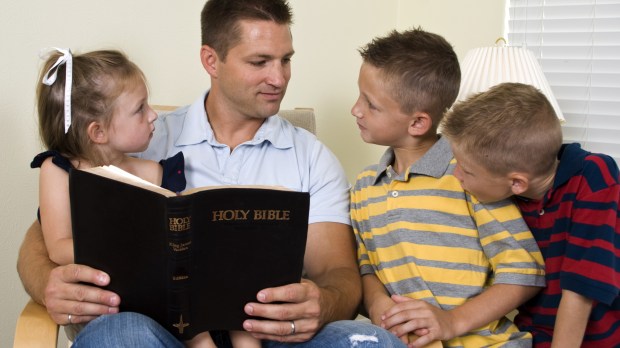The story of the Passion of Christ is undeniably difficult. It is difficult to hear, difficult to bear, difficult to understand, and difficult to tell. It involves torture, injustice, pain, killing, blood, suffering, and cruelty. As parents, it is natural to want to shield our children from such harsh realities. But the story of the Passion, as we also know, does not end at the cross. Within this challenging story lies a powerful message of love, sacrifice, and hope that can resonate deeply with children –if told properly. Here’s how to approach this topic in an honest (and age-appropriate) way.
1. Begin age-appropriately:
Explanations should be tailored to the age of the child. Younger children can grasp the concept of Jesus being treated unfairly and being helped by others. Use simple terms and everyday examples and avoid graphic details that may be too much for some children. Of course, some may be ready to hear a more detailed version of the story sooner than others. You can judge this by how they respond to stories with less intense themes of injustice or overcoming obstacles.
2. Focus on love and sacrifice:
Explain how Jesus showed immense love for humanity, even in the face of pain. Emphasize his teachings on kindness, forgiveness, and helping others, and compare his actions to times when parents show great love for their children through difficult circumstances –and vice versa!
3. Emphasize hope and overcoming darkness:
Explain how pain and suffering didn’t win. You can use the analogy of overcoming a bad dream with the happy feeling of waking up. Relate this to the joy of Easter Sunday. The resurrection is a reminder that even the darkest times are not forever. Just as a storm will eventually pass and the sun will shine again, good will always overcome evil. Make sure that your kids understand that evil will never have the last word.
4. Link it to empathy:
Perhaps this is the first important lesson that young kids can derive from the Passion narrative. Explain that Jesus’ suffering allows us to understand the pain of others. Talk about how we can show kindness to those who are hurting, just as Jesus helped others. Perhaps you can volunteer at a homeless shelter or donate to a charity together. Discuss how seeing people suffer can cause us pain or sadness. This shared sadness inspires us to show compassion to others in need. When we recognize God in our suffering fellow human beings, we have gained some insight into what it means to be compassionate.
It is important to let kids know that it’s okay for children (and adults!) to feel sadness, anger, or confusion about this story. This is an opportunity to discuss these feelings openly and remind them that Jesus understands all of our emotions. Now, this conversation doesn’t have to happen all at once. You can answer your child’s questions as they arise, one at a time. The goal is to plant a seed of understanding: that even in the darkness, love and hope can prevail.



